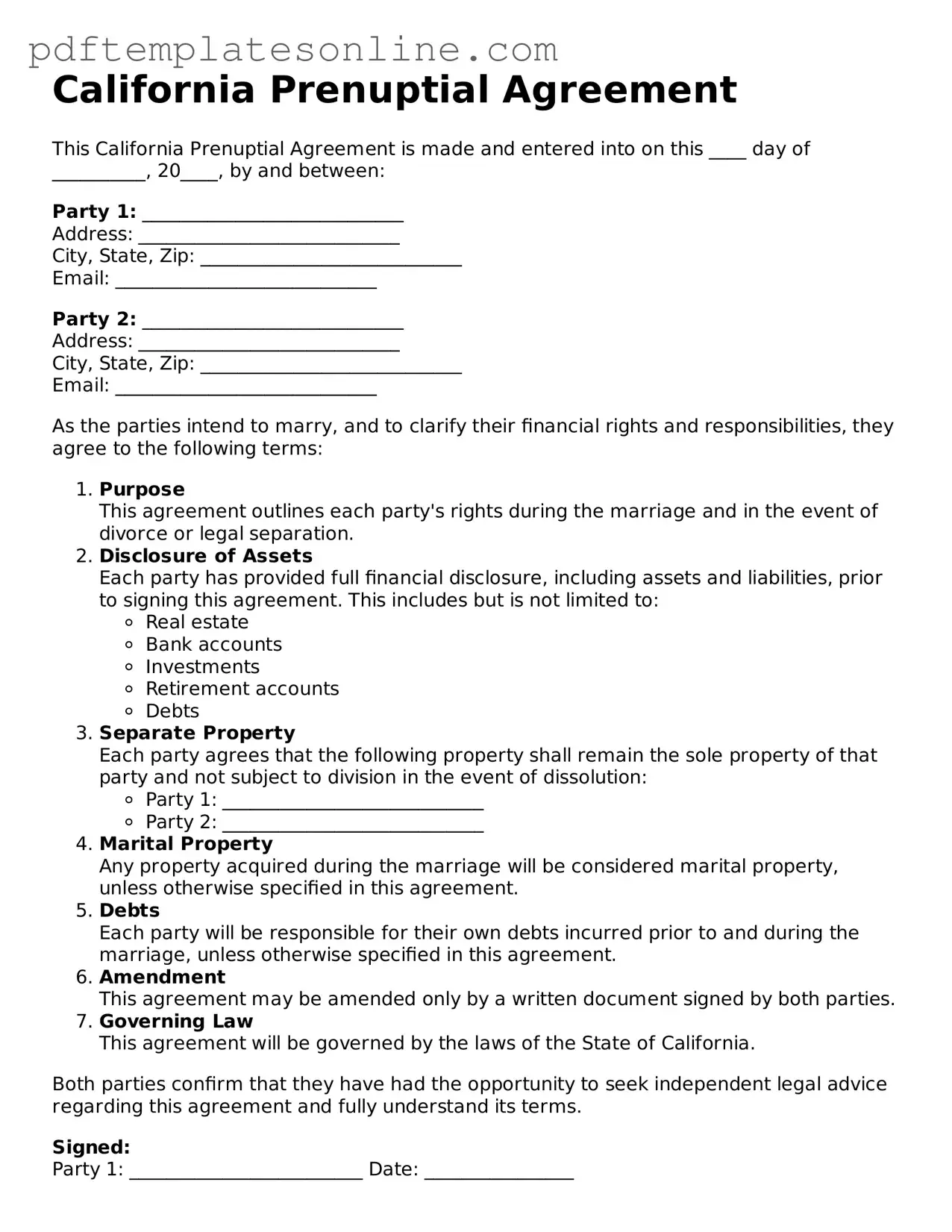Official California Prenuptial Agreement Document
A California Prenuptial Agreement form is a legal document that outlines the financial and property rights of each spouse in the event of divorce or separation. This agreement can help couples clarify their financial responsibilities and protect their individual assets before entering marriage. Understanding this form is essential for anyone considering marriage in California, as it can provide peace of mind and financial security.
Access Prenuptial Agreement Editor Now
